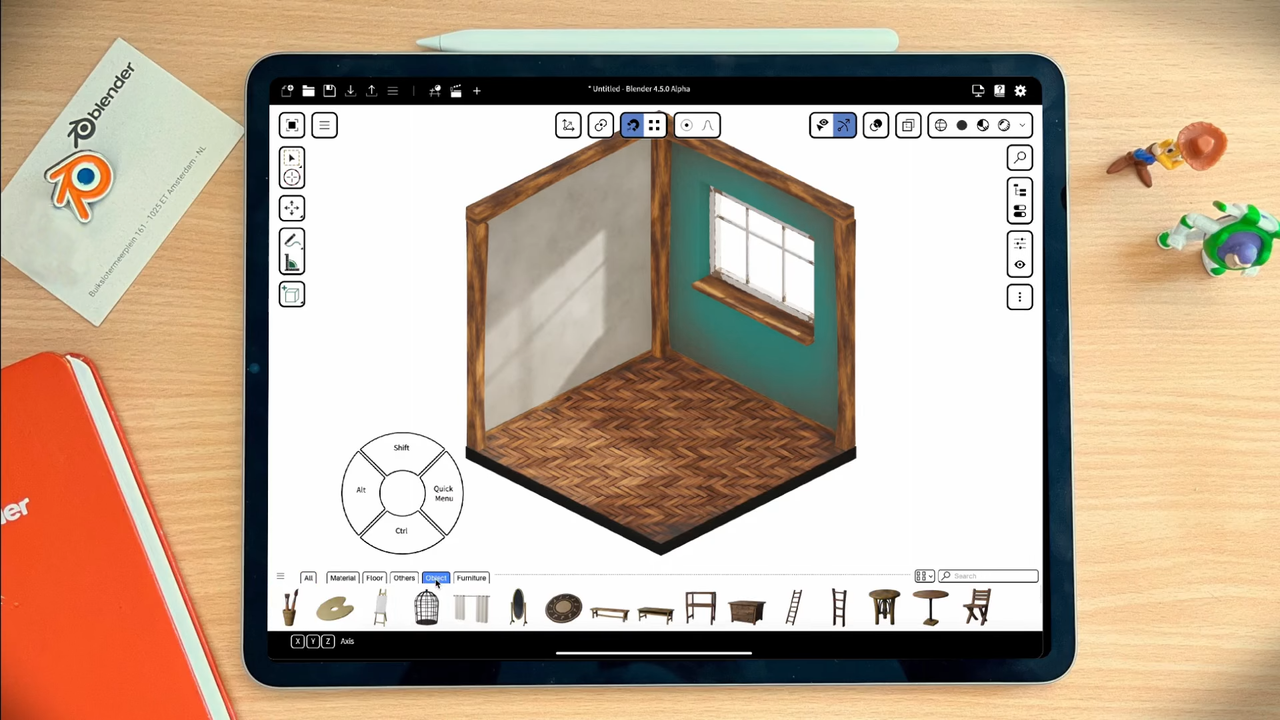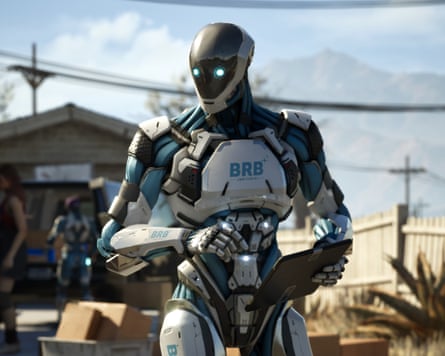A short history of the roadblock
Barricades, as we know them today, are thought to date back to the European wars of religion. According to most historians, the first barricade went up in Paris in 1588; the word derives from the French barriques, or barrels, spontaneously put together. They have been assembled from the most diverse materials, from cobblestones, tyres, newspapers, dead horses and bags of ice, to omnibuses and e‑scooters. Their tactical logic is close to that of guerrilla warfare: the authorities have to take the barricades in order to claim victory; all that those manning them have to do to prevail is to hold them.
The 19th century was the golden age for blocking narrow, labyrinthine streets. Paris had seen barricades go up nine times in the period before the Second Empire; during the July 1830 Revolution alone, 4,000 barricades had been erected. These barricades would not only stop, but also trap troops; people would then throw stones from windows or pour boiling water onto the streets. Georges‑Eugène Haussmann, Napoleon III’s prefect of Paris, famously created wide boulevards to make blocking by barricade more difficult and moving the military easier, and replaced cobblestones with macadam – a surface of crushed stone. As Flaubert observed in his Dictionary of Accepted Ideas: ‘Macadam: has cancelled revolutions. No more means to make barricades. Nevertheless rather inconvenient.’
Lead image: Barricades, as we know them today, are thought to have originated in early modern France. A colour engraving attributed to Achille‑Louis Martinet depicts the defence of a barricade during the 1830 July Revolution. Credit: Paris Musées / Musée Carnavalet – Histoire de Paris. Above: the socialist political thinker and activist Louis Auguste Blanqui – who was imprisoned by every regime that ruled France between 1815 and 1880 – drew instructions for how to build an effective barricade
Under Napoleon III, Baron Haussmann widened Paris’s streets in his 1853–70 renovation of the city, making barricading more difficult
Credit: Old Books Images / Alamy
‘On one hand,wanted to favour the circulation of ideas,’ reactionary intellectual Louis Veuillot observed apropos the ambiguous liberalism of the latter period of Napoleon III’s Second Empire. ‘On the other, to ensure the circulation of regiments.’ But ‘anti‑insurgency hardware’, as Justinien Tribillon has called it, also served to chase the working class out of the city centre: Haussmann’s projects amounted to a gigantic form of real-estate speculation, and the 1871 Paris Commune that followed constituted not just a short‑lived anarchist experiment featuring enormous barricades; it also signalled the return of the workers to the centre and, arguably, revenge for their dispossession.
By the mid‑19th century, observers questioned whether barricades still had practical meaning. Gottfried Semper’s barricade, constructed for the 1849 Dresden uprising, had proved unconquerable, but Friedrich Engels, one‑time ‘inspector of barricades’ in the Elberfeld insurrection of the same year, already suggested that the barricades’ primary meaning was now moral rather than military – a point to be echoed by Leon Trotsky in the subsequent century. Barricades symbolised bravery and the will to hold out among insurrectionists, and, not least, determination rather to destroy one’s possessions – and one’s neighbourhood – than put up with further oppression.
Not only self‑declared revolutionaries viewed things this way: the reformist Social Democrat leader Eduard Bernstein observed that ‘the barricade fight as a political weapon of the people has been completely eliminated due to changes in weapon technology and cities’ structures’. Bernstein was also picking up on the fact that, in the era of industrialisation, contention happened at least as much on the factory floor as on the streets. The strike, not the food riot or the defence of workers’ quartiers, became the paradigmatic form of conflict. Joshua Clover has pointed out in his 2016 book Riot. Strike. Riot: The New Era of Uprisings, that the price of labour, rather than the price of goods, caused people to confront the powerful. Blocking production grew more important than blocking the street.
‘The only weapons we have are our bodies, and we need to tuck them in places so wheels don’t turn’
Today, it is again blocking – not just people streaming along the streets in large marches – that is prominently associated with protests. Disrupting circulation is not only an important gesture in the face of climate emergency; blocking transport is a powerful form of protest in an economic system focused on logistics and just‑in‑time distribution. Members of Insulate Britain and Germany’s Last Generation super‑glue themselves to streets to stop car traffic to draw attention to the climate emergency; they have also attached themselves to airport runways. They form a human barricade of sorts, immobilising traffic by making themselves immovable.
Today’s protesters have made themselves consciously vulnerable. They in fact follow the advice of US civil rights’ Bayard Rustin who explained: ‘The only weapons we have are our bodies, and we need to tuck them in places so wheels don’t turn.’ Making oneself vulnerable might increase the chances of a majority of citizens seeing the importance of the cause which those engaged in civil disobedience are pursuing. Demonstrations – even large, unpredictable ones – are no longer sufficient. They draw too little attention and do not compel a reaction. Naomi Klein proposed the term ‘blockadia’ as ‘a roving transnational conflict zone’ in which people block extraction – be it open‑pit mines, fracking sites or tar sands pipelines – with their bodies. More often than not, these blockades are organised by local people opposing the fossil fuel industry, not environmental activists per se. Blockadia came to denote resistance to the Keystone XL pipeline as well as Canada’s First Nations‑led movement Idle No More.
In cities, blocking can be accomplished with highly mobile structures. Like the barricade of the 19th century, they can be quickly assembled, yet are difficult to move; unlike old‑style barricades, they can also be quickly disassembled, removed and hidden. Think of super tripods, intricate ‘protest beacons’ based on tensegrity principles, as well as inflatable cobblestones, pioneered by the artist‑activists of Tools for Action.
As recently as 1991, newly independent Latvia defended itself against Soviet tanks with the popular construction of barricades, in a series of confrontations that became known as the Barikādes
Credit: Associated Press / Alamy
Inversely, roadblocks can be used by police authorities to stop demonstrations and gatherings from taking place – protesters are seen removing such infrastructure in Dhaka during a general strike in 1999
Credit: REUTERS / Rafiqur Rahman / Bridgeman
These inflatable objects are highly flexible, but can also be protective against police batons. They pose an awkward challenge to the authorities, who often end up looking ridiculous when dealing with them, and, as one of the inventors pointed out, they are guaranteed to create a media spectacle. This was also true of the 19th‑century barricade: people posed for pictures in front of them. As Wolfgang Scheppe, a curator of Architecture of the Barricade, explains, these images helped the police to find Communards and mete out punishments after the end of the anarchist experiment.
Much simpler structures can also be highly effective. In 2019, protesters in Hong Kong filled streets with little archways made from just three ordinary bricks: two standing upright, one resting on top. When touched, the falling top one would buttress the other two, and effectively block traffic. In line with their imperative of ‘be water’, protesters would retreat when the police appeared, but the ‘mini‑Stonehenges’ would remain and slow down the authorities.
Today, elaborate architectures of protest, such as Extinction Rebellion’s ‘tensegrity towers’, are used to blockade roads and distribution networks – in this instance, Rupert Murdoch’s News UK printworks in Broxbourne, for the media group’s failure to report the climate emergency accurately
Credit: Extinction Rebellion
In June 2025, protests erupted in Los Angeles against the Trump administration’s deportation policies. Demonstrators barricaded downtown streets using various objects, including the pink public furniture designed by design firm Rios for Gloria Molina Grand Park. LAPD are seen advancing through tear gas
Credit: Gina Ferazzi / Los Angeles Times via Getty Images
Roads which radicals might want to target are not just ones in major metropoles and fancy post‑industrial downtowns. Rather, they might block the arteries leading to ‘fulfilment centres’ and harbours with container shipping. The model is not only Occupy Wall Street, which had initially called for the erection of ‘peaceful barricades’, but also the Occupy that led to the Oakland port shutdown in 2011. In short, such roadblocks disrupt what Phil Neel has called a ‘hinterland’ that is often invisible, yet crucial for contemporary capitalism. More recently, Extinction Rebellion targeted Amazon distribution centres in three European countries in November 2021; in the UK, they aimed to disrupt half of all deliveries on a Black Friday.
Will such blockades just anger consumers who, after all, are not present but are impatiently waiting for packages at home? One of the hopes associated with the traditional barricade was always that they might create spaces where protesters, police and previously indifferent citizens get talking; French theorists even expected them to become ‘a machine to produce the people’. That could be why military technology has evolved so that the authorities do not have to get close to the barricade: tear gas was first deployed against those on barricades before it was used in the First World War; so‑called riot control vehicles can ever more easily crush barricades. The challenge, then, for anyone who wishes to block is also how to get in other people’s faces – in order to have a chance to convince them of their cause.
2025-06-11
Kristina Rapacki
Share
#short #history #roadblockA short history of the roadblock
Barricades, as we know them today, are thought to date back to the European wars of religion. According to most historians, the first barricade went up in Paris in 1588; the word derives from the French barriques, or barrels, spontaneously put together. They have been assembled from the most diverse materials, from cobblestones, tyres, newspapers, dead horses and bags of ice, to omnibuses and e‑scooters. Their tactical logic is close to that of guerrilla warfare: the authorities have to take the barricades in order to claim victory; all that those manning them have to do to prevail is to hold them.
The 19th century was the golden age for blocking narrow, labyrinthine streets. Paris had seen barricades go up nine times in the period before the Second Empire; during the July 1830 Revolution alone, 4,000 barricades had been erected. These barricades would not only stop, but also trap troops; people would then throw stones from windows or pour boiling water onto the streets. Georges‑Eugène Haussmann, Napoleon III’s prefect of Paris, famously created wide boulevards to make blocking by barricade more difficult and moving the military easier, and replaced cobblestones with macadam – a surface of crushed stone. As Flaubert observed in his Dictionary of Accepted Ideas: ‘Macadam: has cancelled revolutions. No more means to make barricades. Nevertheless rather inconvenient.’
Lead image: Barricades, as we know them today, are thought to have originated in early modern France. A colour engraving attributed to Achille‑Louis Martinet depicts the defence of a barricade during the 1830 July Revolution. Credit: Paris Musées / Musée Carnavalet – Histoire de Paris. Above: the socialist political thinker and activist Louis Auguste Blanqui – who was imprisoned by every regime that ruled France between 1815 and 1880 – drew instructions for how to build an effective barricade
Under Napoleon III, Baron Haussmann widened Paris’s streets in his 1853–70 renovation of the city, making barricading more difficult
Credit: Old Books Images / Alamy
‘On one hand,wanted to favour the circulation of ideas,’ reactionary intellectual Louis Veuillot observed apropos the ambiguous liberalism of the latter period of Napoleon III’s Second Empire. ‘On the other, to ensure the circulation of regiments.’ But ‘anti‑insurgency hardware’, as Justinien Tribillon has called it, also served to chase the working class out of the city centre: Haussmann’s projects amounted to a gigantic form of real-estate speculation, and the 1871 Paris Commune that followed constituted not just a short‑lived anarchist experiment featuring enormous barricades; it also signalled the return of the workers to the centre and, arguably, revenge for their dispossession.
By the mid‑19th century, observers questioned whether barricades still had practical meaning. Gottfried Semper’s barricade, constructed for the 1849 Dresden uprising, had proved unconquerable, but Friedrich Engels, one‑time ‘inspector of barricades’ in the Elberfeld insurrection of the same year, already suggested that the barricades’ primary meaning was now moral rather than military – a point to be echoed by Leon Trotsky in the subsequent century. Barricades symbolised bravery and the will to hold out among insurrectionists, and, not least, determination rather to destroy one’s possessions – and one’s neighbourhood – than put up with further oppression.
Not only self‑declared revolutionaries viewed things this way: the reformist Social Democrat leader Eduard Bernstein observed that ‘the barricade fight as a political weapon of the people has been completely eliminated due to changes in weapon technology and cities’ structures’. Bernstein was also picking up on the fact that, in the era of industrialisation, contention happened at least as much on the factory floor as on the streets. The strike, not the food riot or the defence of workers’ quartiers, became the paradigmatic form of conflict. Joshua Clover has pointed out in his 2016 book Riot. Strike. Riot: The New Era of Uprisings, that the price of labour, rather than the price of goods, caused people to confront the powerful. Blocking production grew more important than blocking the street.
‘The only weapons we have are our bodies, and we need to tuck them in places so wheels don’t turn’
Today, it is again blocking – not just people streaming along the streets in large marches – that is prominently associated with protests. Disrupting circulation is not only an important gesture in the face of climate emergency; blocking transport is a powerful form of protest in an economic system focused on logistics and just‑in‑time distribution. Members of Insulate Britain and Germany’s Last Generation super‑glue themselves to streets to stop car traffic to draw attention to the climate emergency; they have also attached themselves to airport runways. They form a human barricade of sorts, immobilising traffic by making themselves immovable.
Today’s protesters have made themselves consciously vulnerable. They in fact follow the advice of US civil rights’ Bayard Rustin who explained: ‘The only weapons we have are our bodies, and we need to tuck them in places so wheels don’t turn.’ Making oneself vulnerable might increase the chances of a majority of citizens seeing the importance of the cause which those engaged in civil disobedience are pursuing. Demonstrations – even large, unpredictable ones – are no longer sufficient. They draw too little attention and do not compel a reaction. Naomi Klein proposed the term ‘blockadia’ as ‘a roving transnational conflict zone’ in which people block extraction – be it open‑pit mines, fracking sites or tar sands pipelines – with their bodies. More often than not, these blockades are organised by local people opposing the fossil fuel industry, not environmental activists per se. Blockadia came to denote resistance to the Keystone XL pipeline as well as Canada’s First Nations‑led movement Idle No More.
In cities, blocking can be accomplished with highly mobile structures. Like the barricade of the 19th century, they can be quickly assembled, yet are difficult to move; unlike old‑style barricades, they can also be quickly disassembled, removed and hidden. Think of super tripods, intricate ‘protest beacons’ based on tensegrity principles, as well as inflatable cobblestones, pioneered by the artist‑activists of Tools for Action.
As recently as 1991, newly independent Latvia defended itself against Soviet tanks with the popular construction of barricades, in a series of confrontations that became known as the Barikādes
Credit: Associated Press / Alamy
Inversely, roadblocks can be used by police authorities to stop demonstrations and gatherings from taking place – protesters are seen removing such infrastructure in Dhaka during a general strike in 1999
Credit: REUTERS / Rafiqur Rahman / Bridgeman
These inflatable objects are highly flexible, but can also be protective against police batons. They pose an awkward challenge to the authorities, who often end up looking ridiculous when dealing with them, and, as one of the inventors pointed out, they are guaranteed to create a media spectacle. This was also true of the 19th‑century barricade: people posed for pictures in front of them. As Wolfgang Scheppe, a curator of Architecture of the Barricade, explains, these images helped the police to find Communards and mete out punishments after the end of the anarchist experiment.
Much simpler structures can also be highly effective. In 2019, protesters in Hong Kong filled streets with little archways made from just three ordinary bricks: two standing upright, one resting on top. When touched, the falling top one would buttress the other two, and effectively block traffic. In line with their imperative of ‘be water’, protesters would retreat when the police appeared, but the ‘mini‑Stonehenges’ would remain and slow down the authorities.
Today, elaborate architectures of protest, such as Extinction Rebellion’s ‘tensegrity towers’, are used to blockade roads and distribution networks – in this instance, Rupert Murdoch’s News UK printworks in Broxbourne, for the media group’s failure to report the climate emergency accurately
Credit: Extinction Rebellion
In June 2025, protests erupted in Los Angeles against the Trump administration’s deportation policies. Demonstrators barricaded downtown streets using various objects, including the pink public furniture designed by design firm Rios for Gloria Molina Grand Park. LAPD are seen advancing through tear gas
Credit: Gina Ferazzi / Los Angeles Times via Getty Images
Roads which radicals might want to target are not just ones in major metropoles and fancy post‑industrial downtowns. Rather, they might block the arteries leading to ‘fulfilment centres’ and harbours with container shipping. The model is not only Occupy Wall Street, which had initially called for the erection of ‘peaceful barricades’, but also the Occupy that led to the Oakland port shutdown in 2011. In short, such roadblocks disrupt what Phil Neel has called a ‘hinterland’ that is often invisible, yet crucial for contemporary capitalism. More recently, Extinction Rebellion targeted Amazon distribution centres in three European countries in November 2021; in the UK, they aimed to disrupt half of all deliveries on a Black Friday.
Will such blockades just anger consumers who, after all, are not present but are impatiently waiting for packages at home? One of the hopes associated with the traditional barricade was always that they might create spaces where protesters, police and previously indifferent citizens get talking; French theorists even expected them to become ‘a machine to produce the people’. That could be why military technology has evolved so that the authorities do not have to get close to the barricade: tear gas was first deployed against those on barricades before it was used in the First World War; so‑called riot control vehicles can ever more easily crush barricades. The challenge, then, for anyone who wishes to block is also how to get in other people’s faces – in order to have a chance to convince them of their cause.
2025-06-11
Kristina Rapacki
Share
#short #history #roadblock














